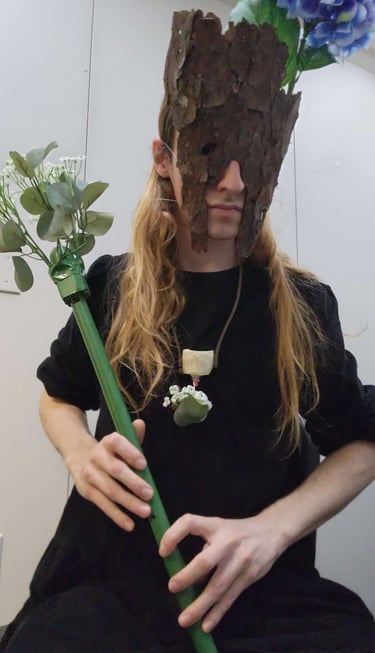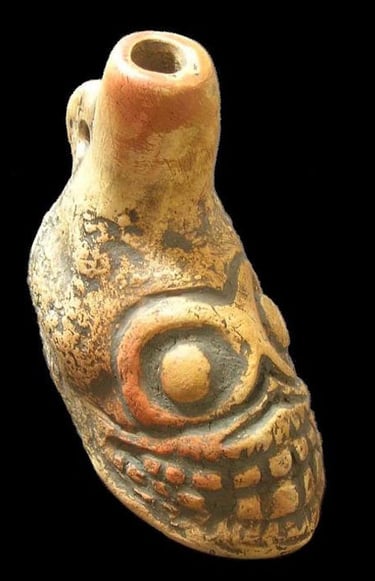The Flower Whistle
Spring 2024 - Spring 2025
Full essay links:


Background
There is scant music tech designed specifically for augmenting extreme vocal techniques as used in death metal. Inspired by the unique physical properties of the Aztec Death Whistle, I sought to combine this popular instrument with a nose flute. This would allow the sound to be shaped by the mouth, offering metal vocalists new timbres.
In the process of researching the original instrument (of which only two have ever been found), two narratives emerged. The popular theory was that these instruments were used by Aztec warriors by the hundreds to psychologically terrorize enemies on the battlefield. On the other hand, the archaeological narrative suggests the instruments were used in rituals relating to the wind deity Ehecatl to recreate the sound of wind. How then, did the first narrative arise?
History teaches us that the destruction of Indigenous cultures and peoples in Mesoamerica was accomplished not just through physical violence, but the erasure of documents, languages, and belief systems. While we may never know the true purpose of these instruments, using them to exalt classical Indigenous art brings attention to these violent colonial histories, ensuring we don’t forget what little remains.


Prototyping
The primary challenges of redesigning the death whistle were aesthetic and mechanical. The air-spring mechanism that produces the noise characteristic of the whistle involves multiple variables, such as the dimensions of the resonating cavity, air velocity, and acoustic pairing with the mouth.
The presentation of the whistle draws heavily from Nahua floral aesthetics. The original whistle’s skull shape mimicking Ehecatl’s iconography invokes a macabre reaction from Western audiences, which often are intertwined with bloodthirsty stereotypes of Indigenous peoples. Thus, I chose to adorn the whistle with flowers, a metaphor for life and the soul, instead of death as is so often misinterpreted in this context.
New Tech, Old Words
“Flowers Are Our Garments” Combines Flower and Song poetry with other classical Mesoamerican musical traditions such as flutes and drums to provide a rich thematic context for the flower whistle. The song’s lyrics were written by Aztec tlatoani Nezahualcoyotl and speak to the fleeting nature of life. Taken in context with the devastation of La Conquista and the effects it had on the global environment, it evokes a melancholic sense of instability at a rapidly changing world that we still relate to hundreds of years later.
Sonovox
While the flower whistle works well for vowel sounds, consonants must be spoken for words to be intelligible. Alternatively, a combination of screamed and flower-whistled tracks can be combined and played through the throat using a sonovox. This allows the sound of the flower whistle to travel through the singer’s entire vocal tract, permitting full use of consonants. The combination of flower whistle and screamed vocals convolved through the vocal tract culminates in a scream quality unlike any other.
This was used in the song Orbis Spike, which details climate change and the early Anthropocene through Nahuatl Flower & Song poetry, Shakespeare’s The Tempest, and contemporary poet Jennifer Rahim’s poem “The Orbis Spike, 1610”.
Visual projections designed by collaborator Chaeryeong Oh.

